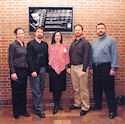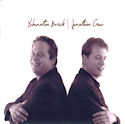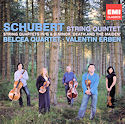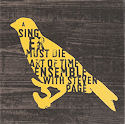DISCoveries: Editor's Corner - May 2010
Since DISCoveries began in the summer of 2001 we have reviewed 3,300 CDs and DVDs in these pages, including literally hundreds of local and independent releases. The section has evolved over the past nine years from modest beginnings with a handful of writers reviewing 14 discs in our first issue to about twenty regular contributors, including mavens Bruce Surtees, Geoff Chapman, Terry Robbins and Ken Waxman with their wealth of experience and diversity of expertise, covering more than three dozen titles each month in recent years.
A quick check of my data base reveals Canadian classical labels have been very well represented by DISCoveries, with two Montreal companies leading the pack - ATMA (168) and Analekta (108) – followed by National contributors CBC Records (94) and the Canadian Music Centre’s Centrediscs (82) and the Toronto company Marquis Classics (42). Smaller classical and contemporary Canadian labels include archival specialists DoReMi (31), XXI-Records (24) Arktos (21), Empreintes digitales (20), Artifact (15), Opening Day (15), Skylark (12) and Phoenix (6). Canadian Jazz and improvised music labels are also found in abundance with Ambiances Magnétiques (39), Justin Time (31), ALMA (16), Sackville (14), Timely Manor (6) and local newcomer Barnyard Records (3). And this does not include more than 500 reviews of independent releases by mostly local and regional artists spanning all creative genres.
Of course we don’t ignore the “majors” and have featured countless reviews of Canadian and local artists on international labels big and small: The Artists of the Royal Conservatory (ARC Ensemble) on RCA; Measha Brueggergosman on DG; Angela Hewitt, Michael Schade, Marc André Hamelin and Gerald Finley on Hyperion; Denise Djokic on SONY; Diana Krall on Verve; James Ehnes on Chandos and Onyx; Jane Bunnett, Jesse Cook and the Saint Lawrence Quartet all on EMI; Louis Lortie on Chandos; Marie-Nicole Lemieux on Naïve; MC Maguire on innova; Molly Johnson on Universal; Naida Cole on DECCA; Les Violons du Roy on Dorian, and I Furiosi on Dorian Sono Luminus; plus dozens of Canadian groups and artists who have appeared on NAXOS in recent years (Joel Quarrington and Andrew Burashko, Robert Aitken, Amici, Aradia, Luc Beauséjour, Elora Festival Choir, Karina Gauvin, Mirage Quartet, New Music Concerts, Patrick Wedd, the Toronto Chamber Orchestra and the Toronto Wind Orchestra to name just a few).
As the world becomes more focused on internet services and digital downloading, we too are developing web-based features including additional new reviews, access to archival material, search functions, links to artists and “click through to purchase” options on our website. But for the moment our emphasis remains with the 30,000 copies of the magazine which are printed and distributed throughout the GTA each month. With that in mind we continue to give priority to Toronto and Canadian artists and labels and to international musicians who will be performing in the GTA in the coming months. Discs already under consideration for the June issue include Pepusch and Gay’s “Polly” – a sequel to The Beggar’s Opera which was suppressed at the time of composition for political reasons and later reworked by Samuel Arnold - performed by a host of local singers and the Aradia Ensemble under Kevin Mallon’s direction (NAXOS); Margaret Little’s “Senza Continuo” – works for solo viola da gamba by Saint-Colombe and Marin Marais among others (ATMA); The ARC Ensemble’s third CD “Two Roads to Exile” – featuring rarely heard chamber gems by Walter Braunfels and Adolf Busch (RCA); Volume 1 of the “Complete Choral Music of Julian Wachner” - the 10th CD by the Elora Festival Singers under Noel Edison (NAXOS); local blues singer Shakura S’Aida’s second album “Brown Sugar” (on Germany’s Ruf Records); Vancouver chamber choir Musica Intima’s latest with works by Raminsh, Schafer, Lang, Morlock, Healey, Ryan and Sharman (ATMA); and a new release by Toronto pianist Mary Kenedi featuring concertos by Bloch, Bartok and Easton (Echiquier) which will be launched at a concert on May 9 at Gallery 345. As you can see our commitment to local and Canadian talent continues to be a top priority.
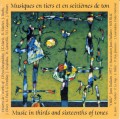 In closing there is one recording I would like to tell you about - a long-awaited 2 CD set which documents some interesting experiments with microtonal divisions of the octave. It would be easy to think that it was only with the advent of the computer that it became possible to accurately divide the traditional 12 semitone chromatic octave into smaller parts. But there was a Mexican composer, Julian Carrillo (1875-1965), who in the middle of the last century commissioned Sauter, a German piano company, to manufacture instruments tuned in thirds, fourths, fifths and so on up to fifteenths and sixteenths of tones. Montreal composer Bruce Mather used the proceeds of his 2000 Serge Garant Prize to purchase a replica of Carrillo’s sixteenths of tone piano which he donated to the Montréal Conservatoire. The SNE release Music in Thirds and Sixteenths of Tones (SNE-667-CD) includes works written for this intriguing instrument by Gilles Tremblay, Jacques Desjardins, Michel Gonneville, Vincent Olivier Gagnon and Mather himself among others. In all, the keyboard of the Carrillo instrument incorporates 96 divisions of the octave. That is to say that the 97 notes on the Carillo’s keyboard span just one octave from top to bottom. It is intriguing how each of the composers finds ways to use these tiny intervals to best advantage. At times there is a wash of sound which totally immerses the auditor and at other times an abrasive juxtaposition of notes which sound convincing, but not quite right. Perhaps the easiest to grasp is Desjardins’ clever reworking of the folksong Où va Pierrot? The simplicity of the folk melody is subverted by the extreme microtonal possibilities of this unique instrument, but in a most intriguing and compelling way. Mather combines the Carrillo piano with the infinite possibilities of the ondes Martenot, one of the first electronic instruments, which like the Theremin is capable of glissandi and miniscule gradations of the octave. Interestingly, Mather chooses to use the ondes Martenot to give the tonal centre in his etudes. The first disc also includes works composed for Carrillo’s piano in thirds of tones by Wyschnegradsky, Mather and Jean Étienne Marie performed by Martine Joste. Not for the faint of heart, but an exquisite adventure for those who feel that “Eight is NOT Enough”.
In closing there is one recording I would like to tell you about - a long-awaited 2 CD set which documents some interesting experiments with microtonal divisions of the octave. It would be easy to think that it was only with the advent of the computer that it became possible to accurately divide the traditional 12 semitone chromatic octave into smaller parts. But there was a Mexican composer, Julian Carrillo (1875-1965), who in the middle of the last century commissioned Sauter, a German piano company, to manufacture instruments tuned in thirds, fourths, fifths and so on up to fifteenths and sixteenths of tones. Montreal composer Bruce Mather used the proceeds of his 2000 Serge Garant Prize to purchase a replica of Carrillo’s sixteenths of tone piano which he donated to the Montréal Conservatoire. The SNE release Music in Thirds and Sixteenths of Tones (SNE-667-CD) includes works written for this intriguing instrument by Gilles Tremblay, Jacques Desjardins, Michel Gonneville, Vincent Olivier Gagnon and Mather himself among others. In all, the keyboard of the Carrillo instrument incorporates 96 divisions of the octave. That is to say that the 97 notes on the Carillo’s keyboard span just one octave from top to bottom. It is intriguing how each of the composers finds ways to use these tiny intervals to best advantage. At times there is a wash of sound which totally immerses the auditor and at other times an abrasive juxtaposition of notes which sound convincing, but not quite right. Perhaps the easiest to grasp is Desjardins’ clever reworking of the folksong Où va Pierrot? The simplicity of the folk melody is subverted by the extreme microtonal possibilities of this unique instrument, but in a most intriguing and compelling way. Mather combines the Carrillo piano with the infinite possibilities of the ondes Martenot, one of the first electronic instruments, which like the Theremin is capable of glissandi and miniscule gradations of the octave. Interestingly, Mather chooses to use the ondes Martenot to give the tonal centre in his etudes. The first disc also includes works composed for Carrillo’s piano in thirds of tones by Wyschnegradsky, Mather and Jean Étienne Marie performed by Martine Joste. Not for the faint of heart, but an exquisite adventure for those who feel that “Eight is NOT Enough”.
We welcome your feedback and invite submissions. CDs and comments should be sent to: The WholeNote, 503 – 720 Bathurst St. Toronto ON M5S 2R4.
David Olds, DISCoveries Editor
discoveries@thewholenote.com


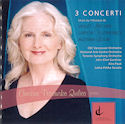 The latest Centrediscs release, featuring works by Alexina Louie, Violet Archer and Larysa Kuzmenko, appropriately arrived on International Women’s Day. Pianist Christina Petrowska Quilico is the soloist on 3 Concerti (CMCCD 15610), a disc which serves to remind us that there is a grand tradition of concerto writing in this country and begs the question – why are they so rarely played? According to the Encyclopaedia of Music in Canada, interest in the concertante form began in earnest in 1938 with Ballade for viola and strings by Godfrey Ridout and the following year with Violet Archer’s Concerto for the unusual combination of timpani and orchestra. Piano concertos came to the fore in the 1940s, with 13 premiered between 1944 (Healey Willan) and 1949 (Clermont Pépin’s second). The 1950s saw the focus turn to the violin concerto with particularly successful examples by Alexander Brott, Murray Adaskin and John Weinzweig, but as this disc attests interest in the piano never waned. We are presented with works spanning four decades, from 1956 (Archer) to 1996 (Kuzmenko). Of the three, Louie’s (1984) is the most exotic. Drawing on the composer’s oriental heritage both melodically and in some of the instrumentation in the percussion section, the work is a skilful and exuberant blending of East and West. Petrowska Quilico is in fine form with the National Arts Centre Orchestra under Alex Pauk. Interestingly, considering her first foray into the concerto form, Violet Archer’s Piano Concerto No. 1 opens with a flourish from the timpani before the piano enters in moto perpetuo mode. Recorded in 1981 by the CBC Vancouver Orchestra under John Eliot Gardiner, I am a bit disappointed with the audio quality of this transfer, but have no complaints about the performance. Somewhat reminiscent of Archer’s teacher Bela Bartok in its orchestration, melodically this is a bold and mature work reflective of its time. The final piece is the most recent but also the most old-fashioned. Kuzmenko is an unabashed Romantic whose model seems to be Rachmaninov, although here too I sense the influence of Bartok. The work is flamboyantly virtuosic and Petrowska Quilico takes full advantage of the opportunity to rise to the occasion. Recorded at the Massey Hall New Music Festival in 1996 with Jukka-Pekka Saraste conducting the Toronto Symphony, I am left wondering why this would be programmed as new music. It is a well-crafted, dramatic work that would be well at home on any mainstream orchestral concert and, like the others on this disc, deserves to be heard more often.
The latest Centrediscs release, featuring works by Alexina Louie, Violet Archer and Larysa Kuzmenko, appropriately arrived on International Women’s Day. Pianist Christina Petrowska Quilico is the soloist on 3 Concerti (CMCCD 15610), a disc which serves to remind us that there is a grand tradition of concerto writing in this country and begs the question – why are they so rarely played? According to the Encyclopaedia of Music in Canada, interest in the concertante form began in earnest in 1938 with Ballade for viola and strings by Godfrey Ridout and the following year with Violet Archer’s Concerto for the unusual combination of timpani and orchestra. Piano concertos came to the fore in the 1940s, with 13 premiered between 1944 (Healey Willan) and 1949 (Clermont Pépin’s second). The 1950s saw the focus turn to the violin concerto with particularly successful examples by Alexander Brott, Murray Adaskin and John Weinzweig, but as this disc attests interest in the piano never waned. We are presented with works spanning four decades, from 1956 (Archer) to 1996 (Kuzmenko). Of the three, Louie’s (1984) is the most exotic. Drawing on the composer’s oriental heritage both melodically and in some of the instrumentation in the percussion section, the work is a skilful and exuberant blending of East and West. Petrowska Quilico is in fine form with the National Arts Centre Orchestra under Alex Pauk. Interestingly, considering her first foray into the concerto form, Violet Archer’s Piano Concerto No. 1 opens with a flourish from the timpani before the piano enters in moto perpetuo mode. Recorded in 1981 by the CBC Vancouver Orchestra under John Eliot Gardiner, I am a bit disappointed with the audio quality of this transfer, but have no complaints about the performance. Somewhat reminiscent of Archer’s teacher Bela Bartok in its orchestration, melodically this is a bold and mature work reflective of its time. The final piece is the most recent but also the most old-fashioned. Kuzmenko is an unabashed Romantic whose model seems to be Rachmaninov, although here too I sense the influence of Bartok. The work is flamboyantly virtuosic and Petrowska Quilico takes full advantage of the opportunity to rise to the occasion. Recorded at the Massey Hall New Music Festival in 1996 with Jukka-Pekka Saraste conducting the Toronto Symphony, I am left wondering why this would be programmed as new music. It is a well-crafted, dramatic work that would be well at home on any mainstream orchestral concert and, like the others on this disc, deserves to be heard more often.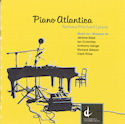 Another Centrediscs release, Piano Atlantica (CMCCD-15210) is a marvellous collection of music by composers from across the country who now make their home in the Atlantic provinces. Pianist Barbara Pritchard, herself a transplant from British Columbia via Toronto, where she was a member of Arraymusic and Continuum and performed with New Music Concerts on several memorable occasions, now lives in Halifax and teaches at Dalhousie. The first notes we hear, in Jerome Blais’ Con Stella, are pounded chords at the extreme reaches of the piano’s keyboard. In his short piece Blais, originally from Montreal, also ventures inside the piano for Aeolian harp-like strumming of the strings, knocking on the inside of the instrument and employing a number of percussive “preparations”. B.C. native Ian Crutchley contributes a set of Variations based on an 11-note pitch series which holds our attention throughout its 20 minute journey. Another West Coast transplant, Anthony Genge’s Four Quiet Preludes offer a welcome respite from the drama of the first two pieces and Pritchard lingers lovingly over the long decays, never rushing to the next note. Maritime-born Richard Gibson is well represented on this disc, with a selection from his 25 Preludes - highlights include Hommage à Erik and Ricercare à 3 – and Variation, a short work in which the composer limits himself to a two octave range corresponding to the compass of a toy piano. A founding member of Toronto’s Continuum collective, Venezuelan-born Clark Ross is now the artistic director of the Newfound Music Festival in St. John’s. Ross’ at times rollicking and at times contemplative Last Dance brings this fine disc to a close. Recorded at the St. Mary’s University Art Gallery in Halifax, both pianist and piano sound exceptional.
Another Centrediscs release, Piano Atlantica (CMCCD-15210) is a marvellous collection of music by composers from across the country who now make their home in the Atlantic provinces. Pianist Barbara Pritchard, herself a transplant from British Columbia via Toronto, where she was a member of Arraymusic and Continuum and performed with New Music Concerts on several memorable occasions, now lives in Halifax and teaches at Dalhousie. The first notes we hear, in Jerome Blais’ Con Stella, are pounded chords at the extreme reaches of the piano’s keyboard. In his short piece Blais, originally from Montreal, also ventures inside the piano for Aeolian harp-like strumming of the strings, knocking on the inside of the instrument and employing a number of percussive “preparations”. B.C. native Ian Crutchley contributes a set of Variations based on an 11-note pitch series which holds our attention throughout its 20 minute journey. Another West Coast transplant, Anthony Genge’s Four Quiet Preludes offer a welcome respite from the drama of the first two pieces and Pritchard lingers lovingly over the long decays, never rushing to the next note. Maritime-born Richard Gibson is well represented on this disc, with a selection from his 25 Preludes - highlights include Hommage à Erik and Ricercare à 3 – and Variation, a short work in which the composer limits himself to a two octave range corresponding to the compass of a toy piano. A founding member of Toronto’s Continuum collective, Venezuelan-born Clark Ross is now the artistic director of the Newfound Music Festival in St. John’s. Ross’ at times rollicking and at times contemplative Last Dance brings this fine disc to a close. Recorded at the St. Mary’s University Art Gallery in Halifax, both pianist and piano sound exceptional.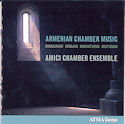 Armenian Chamber Music is the 10th release from Toronto’s Amici Chamber Ensemble and their first for the ATMA label (ACD2 2609). Pianist Serouj Kradjian, who recently replaced founding member Patricia Parr, brings a wealth of repertoire from his homeland as well as his own compositional skills to the mix. The other core members, clarinettist Joaquin Valdepeñas and cellist David Hetherington, are joined by violinist Benjamin Bowman in various combinations for works by Arno Babadjanian, Aram Khachaturian and Alexander Arutiunian. An unexpected treat upon listening without first checking the liner notes, was the warm and compelling voice of Isabel Bayrakdarian in Oror, a lullaby for soprano, clarinet and four cellos by Parsegh Ganatchian. Guests for this track are Hetherington’s TSO colleagues Winona Zelenka, Roberta Janzen and freelancer Amy Laing. Following Kradjian’s haunting and dramatic Elegy for Restive Souls the lullaby has a magical quality that leaves us regretting its brief duration. Khachaturian’s Trio for clarinet, violin and piano with it unusual Andante con dolore opening movement leads gently out of the lullaby, but is lively, playful and lyrical in the movements that follow. Arutiunian's 1992 Suite for the same forces provides a rambunctious finale for Amici's new disc.
Armenian Chamber Music is the 10th release from Toronto’s Amici Chamber Ensemble and their first for the ATMA label (ACD2 2609). Pianist Serouj Kradjian, who recently replaced founding member Patricia Parr, brings a wealth of repertoire from his homeland as well as his own compositional skills to the mix. The other core members, clarinettist Joaquin Valdepeñas and cellist David Hetherington, are joined by violinist Benjamin Bowman in various combinations for works by Arno Babadjanian, Aram Khachaturian and Alexander Arutiunian. An unexpected treat upon listening without first checking the liner notes, was the warm and compelling voice of Isabel Bayrakdarian in Oror, a lullaby for soprano, clarinet and four cellos by Parsegh Ganatchian. Guests for this track are Hetherington’s TSO colleagues Winona Zelenka, Roberta Janzen and freelancer Amy Laing. Following Kradjian’s haunting and dramatic Elegy for Restive Souls the lullaby has a magical quality that leaves us regretting its brief duration. Khachaturian’s Trio for clarinet, violin and piano with it unusual Andante con dolore opening movement leads gently out of the lullaby, but is lively, playful and lyrical in the movements that follow. Arutiunian's 1992 Suite for the same forces provides a rambunctious finale for Amici's new disc.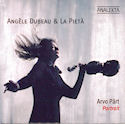 Angèle Dubeau & La Pietà’s latest, Arvo Pärt: Portrait (Analekta AN 2 8731), is a strong collection of the Estonian master’s works. A leading proponent of so-called Mystic or Holy Minimalism (not the composer’s terms), Pärt employs a self-made lush but austere compositional style called tintinnabuli. Several of his best known works are here, including Cantus In Memoriam Benjamin Britten for string orchestra and bell, Tabula Rasa for 2 violins, string orchestra and prepared piano and Spiegel im Spiegel for violin and piano. Pärt is particularly noted for his choral writing, represented here by Wallfartslied (Pilgrim’s Song) for male choir and strings. First championed by Gidon Kremer, it is perhaps appropriate that Quebec’s own superstar violinist Angèle Dubeau should be bringing Pärt’s music to a new audience. If you are not already familiar, this would make a great introduction to his work.
Angèle Dubeau & La Pietà’s latest, Arvo Pärt: Portrait (Analekta AN 2 8731), is a strong collection of the Estonian master’s works. A leading proponent of so-called Mystic or Holy Minimalism (not the composer’s terms), Pärt employs a self-made lush but austere compositional style called tintinnabuli. Several of his best known works are here, including Cantus In Memoriam Benjamin Britten for string orchestra and bell, Tabula Rasa for 2 violins, string orchestra and prepared piano and Spiegel im Spiegel for violin and piano. Pärt is particularly noted for his choral writing, represented here by Wallfartslied (Pilgrim’s Song) for male choir and strings. First championed by Gidon Kremer, it is perhaps appropriate that Quebec’s own superstar violinist Angèle Dubeau should be bringing Pärt’s music to a new audience. If you are not already familiar, this would make a great introduction to his work.